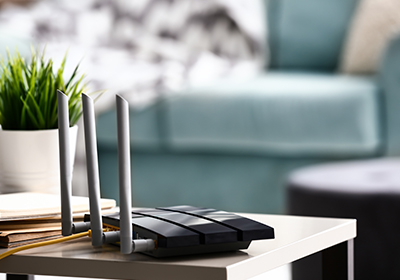What affects wifi speed and how can this be improved?
What affects wifi speed and how can this be improved?
Several factors can affect WiFi speed, including:
Distance from the router: The further away a device is from the router, the weaker the signal strength, which can result in slower speeds.
Obstacles: Walls, furniture, and other obstacles can block or weaken the WiFi signal, reducing the speed and reliability of the connection.
Interference: Other wireless devices or nearby networks operating on the same frequency can interfere with the WiFi signal and reduce its speed.
Network congestion: When multiple devices are connected to the same WiFi network and using it simultaneously, it can cause network congestion, leading to slower speeds.
Outdated hardware: Old routers or devices with outdated wireless network adapters may not support the latest WiFi standards, limiting the maximum speed that can be achieved.
Bandwidth limitations: Internet Service Providers (ISPs) may limit the amount of bandwidth available to a user, which can result in slower speeds during peak usage periods.
Network configuration: Improperly configured network settings or interference from other electronic devices can also affect WiFi speed.
To optimize WiFi speed, it is important to ensure that the router is placed in a central location with a clear line of sight to the devices, avoid obstacles and interference, keep the router firmware up to date, and limit the number of devices connected to the network. Additionally, upgrading to the latest WiFi standards, such as WiFi 6, can provide faster speeds and better performance.
Improving commercial WiFi can involve several strategies, including:
Upgrading to the latest WiFi standards: Upgrading to the latest WiFi standard, such as WiFi 6, can provide faster speeds, improved reliability, and better performance in high-density environments.
Increasing the number of access points: Adding more access points can help distribute the WiFi signal more evenly, reduce network congestion, and provide better coverage in large or multi-story buildings.
Implementing Quality of Service (QoS): QoS can help prioritize network traffic and ensure that critical applications, such as VoIP or video conferencing, have adequate bandwidth and minimal latency.
Using mesh networking: Mesh networking involves using multiple access points to create a single, seamless WiFi network. This can provide better coverage and performance in large or complex environments.
Conducting a WiFi survey: A WiFi survey can help identify dead zones, interference, and other issues that may be affecting the WiFi network. This information can be used to optimize the placement of access points and improve network performance.
Implementing security measures: Commercial WiFi networks may be more vulnerable to cyber attacks, so it is important to implement appropriate security measures, such as WPA3 encryption, strong passwords, and regular firmware updates.
Monitoring network performance: Regularly monitoring network performance can help identify and resolve issues before they affect users. This can involve using network monitoring software or working with a managed IT services provider.
